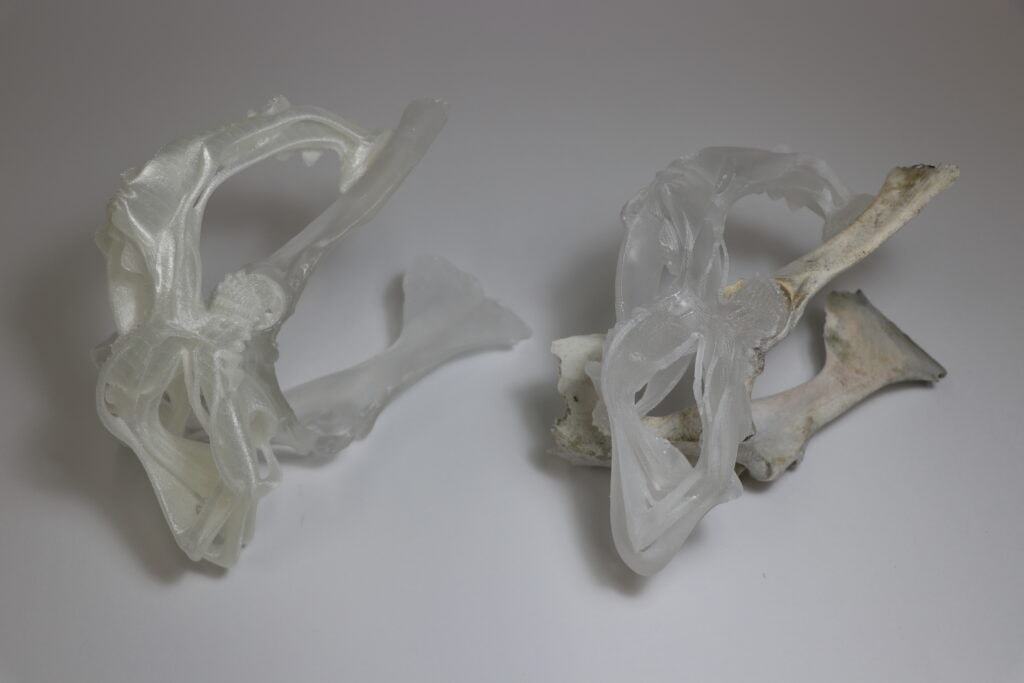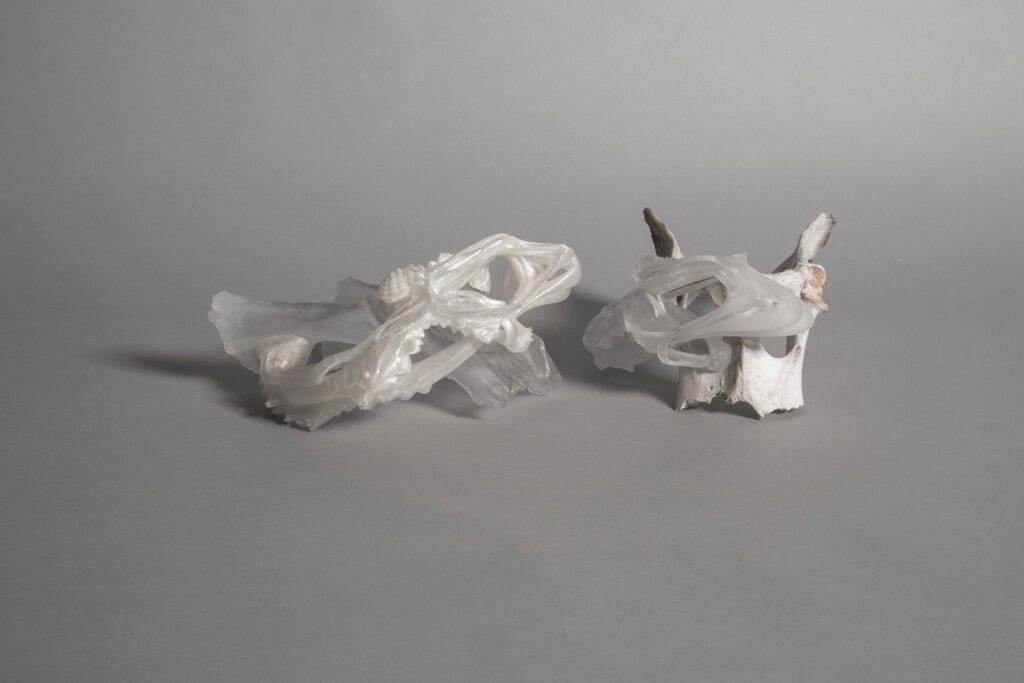Menu
Work
About
Contact
Augmented Fauna consists of two geometrically identical objects, each using three methods of casting. Each generated an otherwise impossible situation for traditional craft by adding a secondary loop, a form of metaconversation, situated between the original and the augmented object, exchangeable with its copy.
The first is a construct containing a 3D-printed prosthesis grafted onto the glass doppelgänger of the original pelvis bone.
The second assemblage is identical in geometry but retains the original pelvis bone augmented by a glass cast of the 3D-printed prosthesis.
The work articulates a clear relationship between digital and traditional craftsmanship tools and processes used in its making, a comparison between 3D scan as immaterial materiality and the investment casting of resulting 3D-printed objects in glass. The dialogue between the two pelvises and their grafted prosthesis opened new narratives about the notion of the material involving physical and digitally shaped processes. In the process of casting, and especially during the burning out of the 3D-printed PLA, fractures occurred and the process needed to be repeated. In addition, bubbles were trapped in the glass as the glass could not flow through all parts of the element and rendered the first cast almost useless. Thus, while using digital tools as a method of scanning and creating a reversed cast proved successful, the direct translation of digital materiality in the form of casting failed.
#Installation
#3D printing
2020



